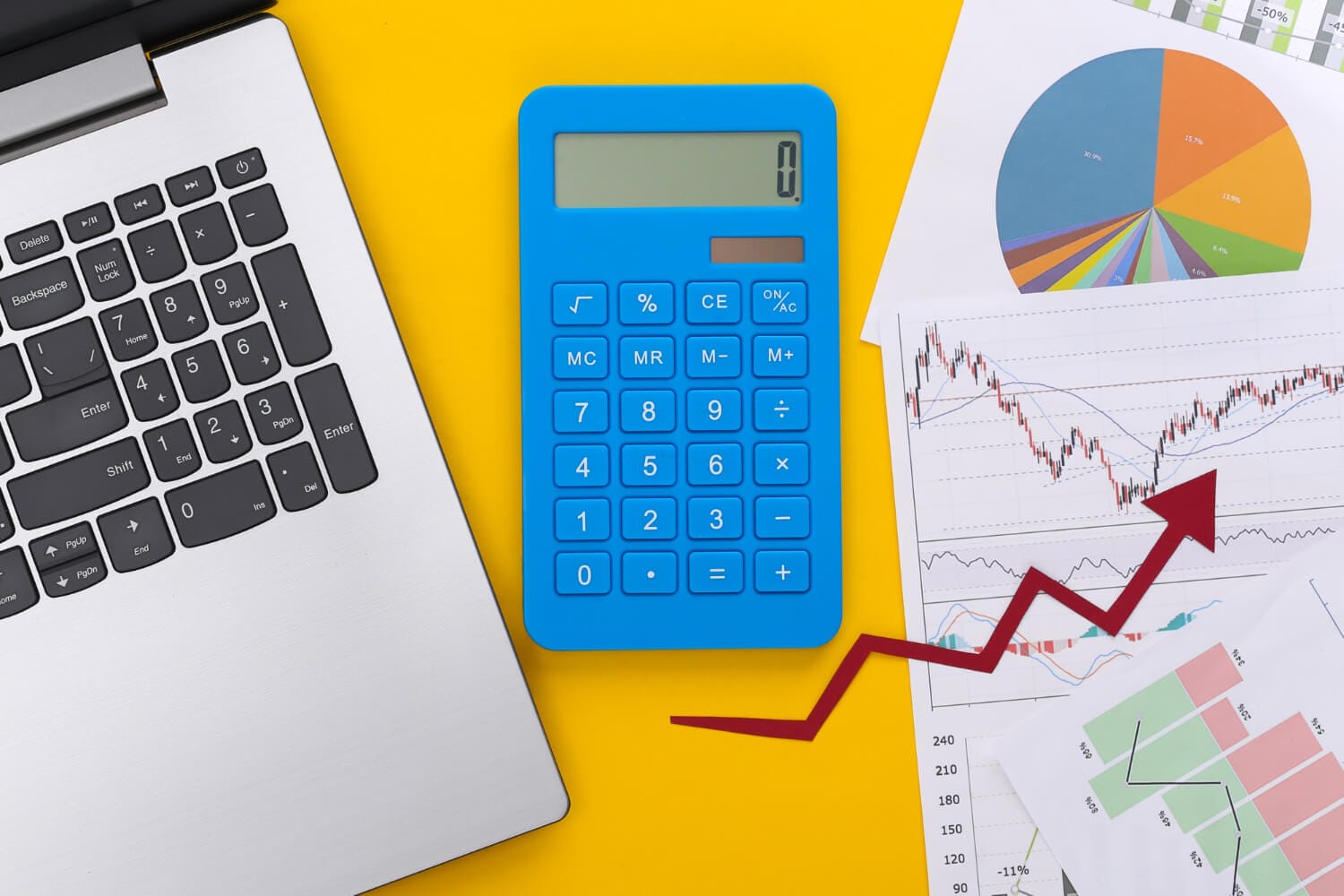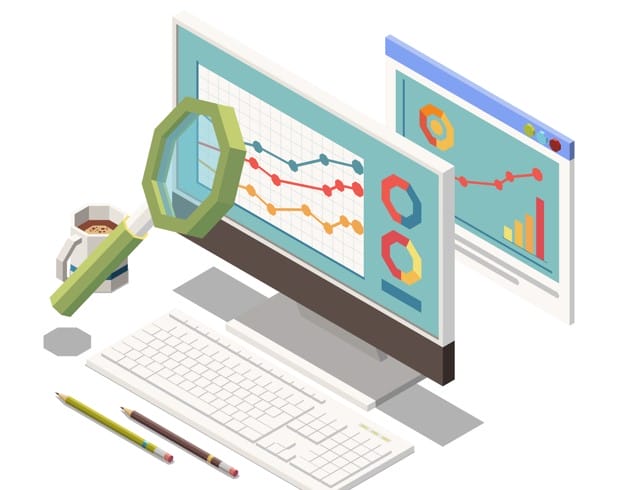1. Introduction to Forex Trading
Forex, short for foreign exchange, is the decentralized global market where currencies are traded. It is the largest financial market globally, with a daily trading volume exceeding $6 trillion. In Forex trading, participants speculate on the price movements of currency pairs. The most traded currency pair is the Euro against the US Dollar (EUR/USD), but traders can access a wide range of currency pairs.
Understanding the basics of Forex involves grasping key concepts:
- Currency Pairs: Forex transactions involve the simultaneous buying of one currency and selling of another. Currency pairs are quoted in terms of one currency’s value against the other. For instance, in EUR/USD, the Euro is the base currency, and the US Dollar is the quote currency.
- Major and Minor Currencies: Major currencies are the most traded and include the US Dollar (USD), Euro (EUR), Japanese Yen (JPY), and others. Minor currencies, also known as cross-currencies, do not include the USD in the pair.
- Central Banks: Central banks play a crucial role in Forex markets by implementing monetary policies, setting interest rates, and influencing currency values. Traders closely monitor central bank decisions and statements for insights into potential market movements.
2. Market Analysis

Market analysis is a crucial aspect of Forex trading, involving the examination of various factors that influence currency prices. Traders use two main approaches: fundamental analysis and technical analysis.
i. Fundamental Analysis
Fundamental analysis involves assessing the intrinsic value of a currency by examining economic, political, and social factors that could impact its strength or weakness.
- Economic Indicators:
- Definition: Economic indicators are statistical data that reflect the economic performance of a country. Key indicators include Gross Domestic Product (GDP), employment rates, inflation, and consumer confidence.
- Purpose: Traders analyze these indicators to gauge the overall health of an economy. Positive economic data may strengthen a currency, while negative data may weaken it.
- Interest Rates:
- Definition: Central banks set interest rates to control inflation and stimulate or cool down economic activity. Changes in interest rates can impact currency values.
- Purpose: Traders monitor interest rate decisions and statements from central banks. Higher interest rates can attract foreign capital, leading to currency appreciation.
- Political Stability and Geopolitical Events:
- Definition: Political stability and geopolitical events, such as elections, trade agreements, and international conflicts, can impact currency values.
- Purpose: Changes in political stability or significant geopolitical events can cause volatility in the Forex market. Traders assess these factors to anticipate potential currency movements.
ii. Technical Analysis

Technical analysis involves studying historical price data and chart patterns to predict future price movements. Traders use various tools and techniques to make informed decisions.
- Price Charts:
- Definition: Price charts visually represent historical price movements of a currency pair over time. Common chart types include candlestick charts, bar charts, and line charts.
- Purpose: Traders use price charts to identify trends, support and resistance levels, and patterns that can provide insights into future price movements.
- Technical Indicators:
- Definition: Technical indicators are mathematical calculations based on historical price and volume data. Examples include Moving Averages, Relative Strength Index (RSI), and MACD.
- Purpose: Traders use technical indicators to confirm trends, identify overbought or oversold conditions, and generate signals for potential entry or exit points.
- Chart Patterns:
- Definition: Chart patterns are recurring formations on price charts that indicate potential trend reversals or continuations. Examples include triangles, head and shoulders, and double tops/bottoms.
- Purpose: Recognizing chart patterns helps traders anticipate potential market movements, providing valuable information for decision-making.
c. Risk Management

Risk management is a critical component of market analysis and involves strategies to protect trading capital and minimize losses.
- Setting Stop-Loss Orders:
- Definition: A stop-loss order is a predetermined price level at which a trader’s position will be automatically closed to limit potential losses.
- Purpose: Setting stop-loss orders helps traders control risk by defining the maximum amount they are willing to lose on a trade.
- Position Sizing:
- Definition: Position sizing involves determining the amount of capital to allocate to each trade based on risk tolerance and the size of the trading account.
- Purpose: Proper position sizing ensures that no single trade has the potential to significantly impact the overall trading account.
- Risk-to-Reward Ratio:
- Definition: The risk-to-reward ratio compares the potential profit of a trade to the potential loss. It helps traders assess whether a trade is worth taking based on the potential reward relative to the risk.
- Purpose: Maintaining a favorable risk-to-reward ratio is a key aspect of risk management, ensuring that potential profits outweigh potential losses.
In summary, market analysis in Forex trading involves a comprehensive examination of fundamental and technical factors, along with effective risk management strategies. Traders use these analyses to make informed decisions, manage risk, and navigate the dynamic and complex Forex market successfully.
3. Building a Solid Foundation
Building a solid foundation in Forex trading is essential for long-term success. This involves educational aspects, selecting the right broker, and understanding the basics of trading.
4. Education and Continuous Learning

- Educational Resources:
- Definition: Educational resources in Forex trading include books, online courses, webinars, and seminars that provide comprehensive insights into various aspects of trading.
- Purpose: Acquiring knowledge through educational resources is fundamental. It helps traders understand market dynamics, technical and fundamental analysis, and risk management strategies.
- Webinars and Workshops:
- Definition: Webinars and workshops are interactive online sessions hosted by experienced traders or financial institutions. They cover specific topics and often allow participants to ask questions.
- Purpose: Participating in webinars and workshops provides real-time insights, practical examples, and a chance to interact with experienced traders. It enhances learning through real-world applications.
- Reading Materials:
- Definition: Reading books and articles written by reputable authors in the field of Forex trading provides in-depth knowledge on various topics.
- Purpose: Books offer a structured way to learn and understand trading concepts, strategies, and the psychological aspects of trading.
- Staying Updated:
- Definition: Staying updated involves keeping abreast of market news, economic releases, and developments in the financial world.
- Purpose: Continuous learning requires staying informed about global events that impact currency markets. Being aware of economic indicators and news helps traders make informed decisions.
5. Choosing the Right Broker

- Regulatory Compliance:
- Definition: Choosing the right broker involves ensuring that the broker is compliant with relevant financial regulations and is licensed to operate in the jurisdiction.
- Purpose: Regulatory compliance is essential for the safety of funds and the overall integrity of the trading process. It provides assurance that the broker follows industry standards and guidelines.
- Verification Process:
- Application: Traders verify the regulatory status of a broker by checking with the relevant financial authorities or regulatory bodies. This information is usually available on the broker’s website.
- Trading Costs and Fees:
- Definition: Evaluating trading costs and fees includes understanding the structure of commissions, spreads, overnight fees, and any other charges associated with trading.
- Purpose: Understanding the cost structure is crucial for managing trading expenses and optimizing the overall profitability of trading activities.
- Comparison Analysis:
- Application: Traders compare the fee structures of different brokers to identify the most cost-effective options. This analysis considers the trader’s trading style and frequency.
- Range of Tradable Instruments:
- Definition: Assessing the range of tradable instruments involves evaluating the variety of financial assets, such as stocks, forex pairs, commodities, and cryptocurrencies, available for trading.
- Purpose: A diverse range of tradable instruments provides traders with more opportunities and flexibility to diversify their portfolios.
- Asset Class Availability:
- Application: Traders choose brokers based on the availability of specific asset classes that align with their trading preferences. For example, a forex trader may prioritize brokers with a wide range of currency pairs.
- Trading Platforms and Tools:

- Definition: Evaluating trading platforms and tools includes assessing the technology provided by the broker for executing trades, analyzing charts, and managing accounts.
- Purpose: A user-friendly and technologically advanced trading platform enhances the overall trading experience and efficiency.
- Demo Accounts:
- Application: Traders often open demo accounts to test the functionality and features of a broker’s trading platform before committing to a live account.
- Customer Service and Support:
- Definition: Assessing customer service involves evaluating the responsiveness, availability, and helpfulness of the broker’s customer support team.
- Purpose: Effective customer service is crucial for addressing issues, resolving queries, and ensuring a smooth trading experience.
- Communication Channels:
- Application: Traders may contact customer support through various channels such as live chat, email, or phone to assess response times and the quality of assistance provided.
- Account Types and Minimum Deposits:
- Definition: Understanding account types and minimum deposit requirements involves reviewing the options available for different account types and the minimum amount needed to open an account.
- Purpose: This information helps traders choose an account that aligns with their trading goals and financial capacity.
- Account Customization:
- Application: Traders consider account types that offer features like different leverage options, account currencies, and additional services. They also evaluate whether the minimum deposit requirement is reasonable.
- Leverage and Margin Policies:

- Definition: Assessing leverage and margin policies involves understanding the amount of leverage offered by the broker and the associated margin requirements.
- Purpose: Leverage can amplify both gains and losses, so understanding the broker’s policies is crucial for risk management.
- Risk Management Considerations:
- Application: Traders evaluate the broker’s leverage options in relation to their risk tolerance and trading strategies. They consider margin requirements to avoid unexpected margin calls.
- Educational Resources:
- Definition: Evaluating educational resources includes assessing the educational materials and tools provided by the broker to help traders enhance their knowledge and skills.
- Purpose: Quality educational resources contribute to the trader’s development and success in the financial markets.
- Webinars, Tutorials, and Analysis:
- Application: Traders explore the availability of webinars, tutorials, market analysis, and other educational content provided by the broker. This is particularly beneficial for novice traders.
- Security and Data Protection:
- Definition: Ensuring security and data protection involves confirming that the broker employs robust security measures to safeguard clients’ personal and financial information.
- Purpose: Security is paramount in online trading to prevent unauthorized access and protect sensitive data.
- SSL Encryption and Privacy Policies:
- Application: Traders look for indicators such as SSL encryption on the broker’s website and review privacy policies to ensure that their data is handled securely.
- Reputation and Reviews:
- Definition: Assessing the broker’s reputation involves researching reviews, testimonials, and feedback from other traders who have used the broker’s services.
- Purpose: The reputation of a broker provides insights into its reliability, transparency, and overall customer satisfaction.
- Independent Review Sites:
- Application: Traders visit independent review sites, forums, and social media to gather opinions from other traders. Analyzing both positive and negative reviews helps form a balanced view.
6. Trading Plan

- Goals and Objectives:
- Definition: Goals and objectives in a trading plan outline what a trader aims to achieve, whether it’s financial targets, risk tolerance, or specific milestones.
- Purpose: Defining goals provides direction and motivation. It serves as a benchmark to measure success and guides decision-making.
- Risk Tolerance:
- Definition: Risk tolerance determines the level of risk a trader is willing to take on each trade, expressed as a percentage of the trading capital.
- Purpose: Understanding and setting risk tolerance ensures that traders don’t expose themselves to excessive risk, protecting their capital.
- Position Sizing:
- Definition: Position sizing involves determining the size of each trade based on risk tolerance and account size.
- Purpose: Proper position sizing prevents large losses and ensures that no single trade significantly impacts the overall trading account.
- Entry and Exit Strategies:
- Definition: Entry and exit strategies define the conditions under which a trader will enter and exit trades, often based on technical or fundamental factors.
- Purpose: Having predefined entry and exit criteria removes emotional decision-making and ensures consistency in trading decisions.
- Trading Hours:
- Definition: Trading hours specify the times during which a trader will actively participate in the market.
- Purpose: Establishing specific trading hours helps maintain discipline, prevents overtrading, and ensures focus during optimal market conditions.
- Review and Adjust:
- Definition: Regularly reviewing and adjusting the trading plan involves assessing its effectiveness and making necessary revisions.
- Purpose: Markets evolve, and trading strategies should adapt. Regular reviews allow traders to refine their plans based on changing market conditions.
In summary, building a solid foundation in Forex trading involves continuous education, selecting a reputable broker, and developing a well-structured trading plan. These elements provide the knowledge and tools necessary for navigating the complexities of the Forex market with confidence and success.
Certainly! Let’s explore the details of the eighth set of headings, specifically “Technical Analysis Strategies.”
7. Technical Analysis Strategies

Technical analysis involves the study of historical price data and chart patterns to forecast future price movements. Here are the key elements of technical analysis strategies:
- Price Charts
- Definition: Price charts visually represent the historical price movements of a currency pair over a specific period. Common types include candlestick charts, bar charts, and line charts.
- Purpose: Price charts provide a visual representation of market dynamics. Traders use them to identify trends, support and resistance levels, and patterns that can offer insights into potential future price movements.
- Technical Indicators
- Definition: Technical indicators are mathematical calculations based on historical price and volume data. Examples include Moving Averages, Relative Strength Index (RSI), and MACD.
- Purpose: Technical indicators offer quantitative insights into market conditions. Traders use them to confirm trends, identify overbought or oversold conditions, and generate signals for potential entry or exit points.
- Chart Patterns
- Definition: Chart patterns are recurring formations on price charts that indicate potential trend reversals or continuations. Examples include triangles, head and shoulders, and double tops/bottoms.
- Purpose: Recognizing chart patterns helps traders anticipate potential market movements. Each pattern has its own set of implications for future price action, providing valuable information for decision-making.
- Trend Analysis
- Definition: Trend analysis involves identifying the prevailing direction of the market trend.
- Purpose: Understanding the trend is crucial for traders. Strategies
8. Fundamental Analysis Strategies

Fundamental analysis involves evaluating the economic, political, and social factors that can influence currency values. Here are the key elements of fundamental analysis strategies:
- Economic Indicators
- Definition: Economic indicators are statistical data that reflect the economic performance of a country. Examples include Gross Domestic Product (GDP), unemployment rates, inflation, and consumer confidence.
- Purpose: Traders analyze economic indicators to gauge the overall health of an economy. Positive economic data may strengthen a currency, while negative data may weaken it.
- Interest Rates
- Definition: Central banks set interest rates to control inflation and stimulate or cool down economic activity.
- Purpose: Traders closely monitor interest rate decisions and statements from central banks. Higher interest rates can attract foreign capital, leading to currency appreciation, while lower rates may lead to depreciation.
- Political Stability and Geopolitical Events
- Definition: Political stability and geopolitical events, such as elections, trade agreements, and international conflicts, can impact currency values.
- Purpose: Changes in political stability or significant geopolitical events can cause volatility in the Forex market. Traders assess these factors to anticipate potential currency movements.
- Economic Events and News Releases

- Definition: Economic events, such as central bank meetings, economic summits, and major news releases, can have a significant impact on currency values.
- Purpose: Traders stay informed about upcoming economic events and news releases that can influence currency markets. Quick reactions to unexpected events are often crucial.
- Carry Trading
- Definition: Carry trading involves taking advantage of interest rate differentials between two currencies.
- Purpose: Traders engage in carry trading by borrowing in a low-interest-rate currency and investing in a higher-interest-rate currency, aiming to profit from the interest rate spread.
- Trade and Current Account Balances
- Definition: Trade and current account balances reflect a country’s exports and imports and the overall flow of money in and out of the country.
- Purpose: Traders analyze trade and current account balances to assess the economic health of a country. Surpluses are generally positive for a currency, while deficits may lead to depreciation.
- Inflation Rates
- Definition: Inflation rates measure the rate at which the general level of prices for goods and services is rising.
- Purpose: Traders monitor inflation rates as they can impact a currency’s purchasing power. Central banks often aim for moderate inflation, and unexpected changes can influence currency values.
- Sentiment Analysis
- Definition: Sentiment analysis involves assessing market sentiment and the overall mood of traders towards a particular currency.
- Purpose: Traders use sentiment analysis to gauge whether the market is optimistic or pessimistic about a currency. Extreme sentiment can sometimes precede trend reversals.
9. Automating Trading with Algorithms

Automating trading with algorithms involves using computer programs to execute trading strategies automatically. Here’s a detailed breakdown:
- Algorithmic Trading Basics
- Definition: Algorithmic trading, often referred to as algo trading or automated trading, involves the use of computer algorithms to execute trades. These algorithms are based on predefined rules and criteria.
- Purpose: The primary purpose of algorithmic trading is to remove human emotions and execute trades at optimal times based on quantitative analysis. Algorithms can process vast amounts of data and execute trades with precision at high speeds.
- Developing Trading Algorithms
- Algorithm Development:
- Definition: Developing a trading algorithm involves creating a set of rules that dictate when to enter or exit a trade, manage risk, and make other trading decisions.
- Purpose: Trading algorithms are designed to automate the decision-making process. Traders may use programming languages like Python or specialized algorithmic trading platforms to code their strategies.
- Backtesting:
- Definition: Backtesting involves applying the algorithm to historical market data to assess how it would have performed in the past.
- Purpose: Backtesting helps traders evaluate the effectiveness of their algorithms and identify potential areas for improvement before deploying them in live markets.
- Execution Algorithms
- Market Execution Algorithms:
- Definition: Market execution algorithms are designed to execute trades at the current market price.
- Purpose: These algorithms aim to minimize slippage and ensure that trades are executed as close as possible to the desired price.
- Limit Order Algorithms:
- Definition: Limit order algorithms are programmed to execute trades at a specific price or better.
- Purpose: Traders use limit order algorithms to wait for favorable price levels, which can be crucial in volatile markets.
- High-Frequency Trading (HFT) Strategies

- Definition: High-frequency trading involves executing a large number of orders at extremely high speeds.
- Purpose: The goal of HFT is to capitalize on small price movements and market inefficiencies. HFT strategies often involve making thousands of trades in a fraction of a second.
- Risk Management in Algorithmic Trading
- Setting Risk Parameters:
- Definition: Risk management in algorithmic trading involves setting parameters to limit the size of individual trades and overall exposure.
- Purpose: Proper risk management ensures that automated strategies don’t lead to significant losses and helps protect the trading capital.
- Adaptive Risk Controls:
- Definition: Adaptive risk controls involve adjusting risk parameters based on market conditions and the algorithm’s performance.
- Purpose: Adaptive risk controls allow algorithms to respond to changing market dynamics and prevent excessive losses during adverse conditions.
- Algorithmic Trading Platforms
- Definition: Algorithmic trading platforms are software that facilitates the development, testing, and deployment of trading algorithms.
- Purpose: These platforms provide tools and infrastructure for traders to create, backtest, and execute algorithmic strategies. Popular algorithmic trading platforms include MetaTrader, NinjaTrader, and proprietary platforms offered by brokerage firms.
- Monitoring and Optimization

- Real-Time Monitoring:
- Definition: Real-time monitoring involves tracking the performance of algorithmic strategies as they execute in live markets.
- Purpose: Monitoring allows traders to intervene if necessary, assess the impact of market events, and make adjustments to optimize performance.
- Continuous Optimization:
- Definition: Continuous optimization involves refining algorithms based on ongoing market data and performance metrics.
- Purpose: Markets evolve, and continuous optimization ensures that algorithms remain effective in different market conditions.
- Legal and Ethical Considerations

- Regulatory Compliance:
- Definition: Regulatory compliance in algorithmic trading involves adhering to legal and industry regulations.
- Purpose: Adhering to regulations helps ensure fair and transparent trading practices and prevents issues such as market manipulation.
- Ethical Considerations:
- Definition: Ethical considerations involve ensuring that algorithmic trading practices are fair and ethical.
- Purpose: Traders and developers must consider the ethical implications of their algorithms, including avoiding strategies that may harm market integrity.
In summary, automating trading with algorithms involves developing, testing, and deploying computer programs to execute trades. Traders use algorithmic trading to streamline decision-making, optimize execution, and manage risk in the dynamic and fast-paced environment of financial markets.
10. Timing and Patience

- Identifying Optimal Entry Points:
- Definition: Timing in trading refers to the ability to identify optimal entry points for trades. It involves analyzing market conditions, technical indicators, and other factors to pinpoint moments when the probability of a successful trade is high.
- Purpose: Identifying optimal entry points is crucial for maximizing profits and minimizing losses. Traders aim to enter positions when the market is favorable, increasing the likelihood of a successful trade.
- Technical Analysis:
- Application: Traders often use technical analysis tools such as trendlines, support and resistance levels, and technical indicators to identify potential entry points. Analyzing price charts helps in recognizing patterns or trends that signal favorable entry opportunities.
- Fundamental Analysis:
- Application: Fundamental analysis can also contribute to timing decisions. For example, a trader might wait for a significant economic announcement or event before entering a trade based on the anticipated impact on currency values.
- Exercising Patience:

- Definition: Patience in trading is the ability to wait for the right market conditions and confirmation of trading signals before executing a trade. It involves resisting the urge to trade impulsively or out of boredom.
- Purpose: Patience is a key virtue in trading as it helps prevent hasty decisions that can lead to losses. It ensures that traders enter trades with a high degree of confidence and in alignment with their predetermined strategies.
- Waiting for Confirmation:
- Application: Traders exercise patience by waiting for confirmation of their analysis or trading signals. For example, if using a technical indicator, they may wait for a specific signal or a combination of signals before initiating a trade.
- Avoiding Overtrading:
- Application: Patience helps traders avoid overtrading, which is the tendency to enter too many trades in a short period. Overtrading can lead to increased transaction costs and a lack of focus on high-quality setups.
- Strategic Decision-Making:
- Definition: Timing and patience contribute to strategic decision-making in trading. Strategic decisions involve considering various factors, including market conditions, risk tolerance, and the overall trading plan.
- Purpose: Strategic decision-making ensures that each trade aligns with the trader’s goals and follows a well-defined plan. It incorporates both the optimal timing for entry and the patience to wait for suitable market conditions.
- Risk-Reward Considerations:
- Application: Traders use timing and patience to assess the risk-reward ratio of each trade. They wait for opportunities where the potential reward justifies the risk taken, making strategic decisions that enhance the overall profitability of their trading.
- Adapting to Market Conditions:
- Definition: Traders need to adapt to changing market conditions, and timing plays a crucial role in this adaptation. Adapting involves recognizing when to be active in the markets and when to exercise patience based on prevailing conditions.
- Purpose: Adapting to market conditions ensures that traders remain flexible. For example, in a ranging market, patience may be key, while in a trending market, timely entries become more critical.
- Continuous Learning:
- Application: Traders continually learn from market experiences, adjusting their timing strategies based on past successes and failures. This adaptive approach helps them refine their decision-making over time.
11. Position Sizing

- Determining Appropriate Position Sizes:
- Definition: Position sizing refers to the process of determining the amount of capital to allocate to a particular trade. It involves deciding the number of units or contracts to buy or sell in a given position.
- Purpose: Proper position sizing is a critical aspect of risk management, aiming to ensure that no single trade significantly impacts the overall trading account. It involves finding a balance between maximizing potential returns and protecting against potential losses.
- Risk Tolerance:
- Application: Traders need to assess their risk tolerance before determining position sizes. This involves considering the maximum percentage of their trading capital that they are willing to risk on a single trade.
- Account Size:
- Application: The size of the trading account influences position sizing. Smaller accounts may need more conservative position sizing to manage risk effectively, while larger accounts may afford more flexibility.
- Setting Stop-Loss Orders:
- Definition: A stop-loss order is a predetermined price level at which a trader’s position will be automatically closed. It acts as a risk management tool to limit potential losses.
- Purpose: Setting stop-loss orders is an integral part of position sizing. It helps traders define the maximum amount they are willing to lose on a trade, preventing significant drawdowns in their trading capital.
- Risk-Reward Ratio:
- Application: The risk-reward ratio, which compares the potential profit of a trade to the potential loss, influences where a trader sets their stop-loss. A favorable risk-reward ratio ensures that potential profits outweigh potential losses.
- Fractional Position Sizing:

- Definition: Fractional position sizing involves allocating a fraction of the total trading capital to each individual trade. This method allows for diversification across multiple trades.
- Purpose: Fractional position sizing helps distribute risk across various trades, reducing the impact of a single losing trade on the overall account. It is particularly useful for traders with smaller accounts.
- Diversification:
- Application: Traders employing fractional position sizing often diversify their trades across different instruments or strategies. Diversification further mitigates risk and enhances the overall risk-adjusted performance.
- Volatility and Position Sizing:
- Definition: Volatility measures the degree of variation of a trading instrument’s price over time. Traders consider volatility when determining the size of their positions.
- Purpose: Volatility influences position sizing by affecting the potential price swings. In high-volatility markets, traders may reduce position sizes to account for larger price fluctuations.
- ATR (Average True Range):
- Application: The Average True Range (ATR) is a common indicator used to measure volatility. Traders may use ATR values to adjust their position sizes, ensuring they are in line with the current market conditions.
- Adapting Position Sizes to Market Conditions:

- Definition: Adapting position sizes to market conditions involves adjusting the size of trades based on the prevailing market environment, trends, or specific events.
- Purpose: Markets are dynamic, and what works in one condition may not work in another. Adapting position sizes allows traders to align their risk exposure with the current market dynamics.
- Event Risk:
- Application: Traders may reduce position sizes or temporarily exit the market ahead of significant events that carry heightened uncertainty, such as economic releases or geopolitical events.
- Scaling Positions:
- Definition: Scaling positions involves adjusting the size of a trade after it has been initiated. This can include adding to a winning position (pyramiding) or reducing exposure in response to changing conditions.
- Purpose: Scaling positions allows traders to manage risk and capitalize on trends. Adding to winning positions or cutting back on losing ones is a strategic approach to optimizing overall trade outcomes.
- Trend Strength:
- Application: Traders may scale into positions when they perceive the strength of a trend is increasing. Conversely, they may scale out of positions when signs of trend weakness emerge.
12. Diversification

- Spreading Investments Across Assets:
- Definition: Diversification involves spreading investments across different assets, such as stocks, bonds, commodities, and currencies, to reduce overall risk.
- Purpose: The primary purpose of diversification is to minimize the impact of poor performance in a single asset or market on the entire portfolio. It aims to enhance the risk-adjusted returns by having exposure to a variety of assets that may respond differently to market conditions.
- Asset Classes:
- Application: Traders and investors diversify by allocating their capital across various asset classes. For example, a portfolio may include a mix of stocks, bonds, and currencies.
- Currency Diversification in Forex:
- Definition: In the context of Forex trading, currency diversification involves trading multiple currency pairs instead of concentrating on a single pair.
- Purpose: Currency diversification helps traders reduce risk by avoiding overconcentration in a specific currency. It also allows them to take advantage of different economic conditions in various regions.
- Geopolitical Factors:
- Application: Traders consider geopolitical factors and economic conditions in different countries when diversifying across currency pairs. This helps them navigate changes in global events and market dynamics.
- Balancing Risk and Return:

- Definition: Diversification seeks to balance the trade-off between risk and return by combining assets with different risk profiles.
- Purpose: Balancing risk and return is essential for constructing a portfolio that can withstand market fluctuations. Diversified portfolios aim to achieve more stable returns over time.
- Correlation Analysis:
- Application: Investors analyze the correlation between assets to understand how they move in relation to each other. Low or negative correlations indicate potential diversification benefits.
- Sector and Industry Diversification:
- Definition: Beyond asset classes, diversification extends to different sectors and industries within the stock market. It involves investing in companies from various sectors to reduce exposure to industry-specific risks.
- Purpose: Sector and industry diversification protect portfolios from adverse events that may impact specific sectors. It allows investors to benefit from the growth of multiple sectors.
- Economic Cycles:
- Application: Investors may diversify across sectors with different sensitivities to economic cycles. For instance, technology stocks may perform well in a growth phase, while utility stocks may be defensive in a recession.
- Global Diversification:
- Definition: Global diversification involves investing in assets from different countries or regions.
- Purpose: Global diversification helps mitigate risks associated with country-specific events, economic downturns, or geopolitical issues. It provides exposure to diverse economic conditions and market cycles.
- Country Risk Assessment:
- Application: Investors assess the economic and political stability of different countries when globally diversifying their portfolios. They may consider factors such as interest rates, inflation, and regulatory environments.
- Diversification and Risk Reduction:

- Definition: The primary goal of diversification is risk reduction. By spreading investments, the impact of a poor-performing asset or market segment is limited.
- Purpose: Diversification seeks to create a portfolio where the positive performance of some assets offsets the negative performance of others, resulting in a more stable overall return.
- Portfolio Allocation:
- Application: Investors allocate their capital across different assets based on their risk tolerance, investment goals, and market outlook. This process involves careful consideration of the correlation between assets.
- Rebalancing Strategies:
- Definition: Rebalancing involves periodically adjusting the allocation of assets in a portfolio to maintain the desired level of diversification.
- Purpose: Rebalancing ensures that the portfolio remains aligned with the investor’s risk tolerance and investment objectives. It involves selling assets that have appreciated and buying those that may be underrepresented.
- Periodic Reviews:
- Application: Investors conduct periodic reviews of their portfolios and make adjustments based on changes in market conditions, asset performance, and their overall financial goals.
13. Performance Evaluation

- Assessing Trading Results:
- Definition: Performance evaluation in trading involves a comprehensive assessment of the results achieved over a specific period. This includes analyzing individual trades, overall profitability, and key performance metrics.
- Purpose: The primary purpose of performance evaluation is to gain insights into the effectiveness of trading strategies, identify areas for improvement, and make informed decisions for future trading.
- Trade Analysis:
- Application: Traders scrutinize individual trades, considering factors such as entry and exit points, risk-reward ratios, and adherence to the trading plan. Analyzing each trade helps understand what worked well and areas that need attention.
- Sharpe Ratio and Risk-Adjusted Returns:
- Definition: The Sharpe Ratio is a measure of risk-adjusted returns, calculated by assessing the excess return of an investment or trading strategy per unit of risk taken.
- Purpose: The Sharpe Ratio helps traders evaluate whether the returns achieved are commensurate with the level of risk undertaken. Higher Sharpe Ratios indicate better risk-adjusted performance.
- Risk Assessment:
- Application: Traders use the Sharpe Ratio to compare the risk-adjusted performance of different strategies. It aids in selecting strategies that offer a favorable balance between risk and return.
- Profit Factor and Win/Loss Ratios:

- Definition: Profit factor is a ratio that measures the profitability of winning trades compared to the losses incurred in losing trades. Win/loss ratios quantify the proportion of winning trades to losing trades.
- Purpose: Profit factor and win/loss ratios provide insights into the consistency and efficiency of a trading strategy. They help traders understand the overall performance in terms of profitability.
- Trade Consistency:
- Application: A profit factor greater than 1 indicates that the strategy is profitable overall, while win/loss ratios offer insights into the consistency of successful trades. Traders assess these metrics to refine their strategies.
- Maximum Drawdown Analysis:
- Definition: Maximum drawdown is the maximum loss from a peak to a trough during a specific period. Drawdown analysis assesses the largest loss incurred before a new high is reached.
- Purpose: Evaluating maximum drawdown is crucial for understanding the risk exposure of a trading strategy. It helps traders assess the potential loss they might experience during adverse market conditions.
- Risk Mitigation:
- Application: Traders aim to minimize maximum drawdown by implementing risk management strategies such as setting stop-loss orders and diversifying their portfolios. Understanding drawdown helps in mitigating potential losses.
- Time-Weighted vs. Money-Weighted Returns:

- Definition: Time-weighted returns account for the performance of a trading strategy over time, independent of cash flows. Money-weighted returns consider the impact of cash inflows and outflows on overall performance.
- Purpose: Understanding the difference between time-weighted and money-weighted returns is crucial for assessing the impact of capital injections or withdrawals on the strategy’s overall performance.
- Investor Decisions:
- Application: Money-weighted returns are more relevant for assessing the impact of investor decisions, such as adding or withdrawing capital from a trading account. Traders use both metrics to evaluate performance accurately.
- Statistical Analysis and Backtesting:
- Definition: Statistical analysis involves using statistical tools and methods to analyze the performance of a trading strategy. Backtesting involves applying the strategy to historical data to assess how it would have performed in the past.
- Purpose: Statistical analysis and backtesting provide quantitative insights into the robustness and reliability of a trading strategy. Traders use these methods to validate and refine their strategies.
- Strategy Improvement:
- Application: Traders identify patterns, correlations, and statistical measures that contribute to the success or failure of their strategies. This information helps in refining and improving trading strategies.
- Benchmark Comparison:
- Definition: Benchmark comparison involves comparing the performance of a trading strategy against a relevant benchmark, such as a market index or industry average.
- Purpose: Benchmarking helps traders assess whether their strategy outperforms or lags behind the broader market or a specific sector. It provides context for evaluating relative performance.
- Market Context:
- Application: Traders choose benchmarks that align with the nature of their strategies. For example, a currency trader might compare performance against a currency index, while a stock trader might use a stock market index as a benchmark.
14. Adapting to Market Changes

- Recognizing Changing Market Conditions:
- Definition: Adapting to market changes involves the ability to recognize shifts in market conditions, including changes in trends, volatility, and economic factors.
- Purpose: The primary purpose is to adjust trading strategies and approaches to align with the evolving dynamics of the market. Recognizing changes in a timely manner is crucial for effective decision-making.
- Technical Indicators:
- Application: Traders often use technical indicators and chart patterns to identify changes in trends or momentum. Recognizing shifts early allows for proactive adjustments to trading strategies.
- Flexibility in Trading Strategies:
- Definition: Flexibility in trading strategies refers to the capacity to modify or switch trading approaches based on prevailing market conditions.
- Purpose: Being flexible allows traders to adapt to different market environments, maximizing opportunities during favorable conditions and minimizing risks during challenging periods.
- Range-Bound vs. Trending Markets:
- Application: In a ranging market, traders may adopt range-bound strategies, while in a trending market, trend-following strategies might be more effective. Flexibility allows for seamless transitions between these approaches.
- Adjusting Risk Management:

- Definition: Adapting to market changes involves adjusting risk management parameters, such as position sizes, stop-loss levels, and overall risk exposure.
- Purpose: Adjusting risk management helps control the impact of changing market conditions on the trading account. It ensures that risk levels remain in line with the trader’s risk tolerance and overall strategy.
- Volatility Considerations:
- Application: During periods of increased volatility, traders may reduce position sizes to account for larger price swings. In contrast, in low-volatility environments, they might adjust positions to capture potential larger moves.
- Incorporating New Information:
- Definition: Adapting to market changes includes the ability to incorporate new information, such as economic releases, geopolitical events, or unexpected news that can influence market dynamics.
- Purpose: Staying informed and integrating new information into decision-making allows traders to make more accurate predictions and adjust strategies accordingly.
- News and Events Analysis:
- Application: Traders monitor economic calendars and news feeds to stay updated on relevant events. Quick reactions to new information help in adapting strategies to unfolding market conditions.
- Sector and Asset Rotation:
- Definition: Sector and asset rotation involve shifting focus and investments between different sectors or asset classes based on their relative performance and market conditions.
- Purpose: Sector and asset rotation allow traders to allocate capital to areas of the market exhibiting strength while reducing exposure to underperforming sectors.
- Economic Cycle Considerations:
- Application: Traders may rotate investments based on economic cycles. For example, in an economic expansion, they might favor cyclical sectors, while defensive sectors may be preferred during economic downturns.
- Monitoring Technical Signals:

- Definition: Adapting to market changes includes monitoring technical signals and indicators for potential shifts in market sentiment or trend reversals.
- Purpose: Technical signals provide timely insights into potential changes in market direction, allowing traders to adjust their strategies before trends fully develop.
- Moving Averages, MACD, RSI:
- Application: Traders use indicators such as moving averages, MACD (Moving Average Convergence Divergence), and RSI (Relative Strength Index) to identify trends, momentum changes, and overbought or oversold conditions.
- Continuous Learning and Improvement:
- Definition: Adapting to market changes involves fostering a mindset of continuous learning and improvement, staying open to new strategies, technologies, and market insights.
- Purpose: Continuous learning ensures that traders remain agile and able to adapt to emerging market trends and technological advancements.
- Education and Analysis:
- Application: Traders engage in ongoing education, attend workshops, and analyze their performance to identify areas for improvement. This proactive approach contributes to long-term success.
15. Emotional Discipline

- Controlling Emotions in Trading:
- Definition: Emotional discipline in trading involves the ability to control and manage emotions, such as fear, greed, excitement, and frustration, during the decision-making process.
- Purpose: The primary purpose is to prevent impulsive and irrational decisions driven by emotions, which can lead to poor trading outcomes. Emotional discipline is essential for maintaining a rational and systematic approach to trading.
- Mindfulness and Awareness:
- Application: Traders practice mindfulness and self-awareness to recognize and control emotions. Techniques such as deep breathing, meditation, and regular self-reflection contribute to emotional discipline.
- Sticking to a Trading Plan:
- Definition: Sticking to a trading plan involves adhering to predetermined rules and strategies, regardless of emotional reactions to market fluctuations.
- Purpose: Following a trading plan provides a structured framework for decision-making, reducing the influence of impulsive emotions. It promotes consistency and adherence to a well-thought-out strategy.
- Rule-Based Trading:
- Application: Traders establish clear rules for entry and exit points, risk management, and position sizing in their trading plans. The commitment to these rules helps override emotional impulses.
- Patience and Delayed Gratification:

- Definition: Patience and delayed gratification in trading involve the ability to wait for optimal trading setups and resist the temptation to chase quick profits.
- Purpose: Patience prevents impulsive actions driven by a desire for immediate gains. Traders who can delay gratification are more likely to make decisions based on careful analysis and strategic planning.
- Avoiding Overtrading:
- Application: Traders exercise patience by waiting for high-probability setups and avoiding overtrading. Waiting for confirmed signals reduces the likelihood of entering trades impulsively.
- Handling Losses and Drawdowns:
- Definition: Handling losses and drawdowns requires the emotional resilience to accept and manage losing trades without letting them negatively impact future decision-making.
- Purpose: Successful traders understand that losses are part of the trading process. Emotional discipline involves maintaining composure during losing streaks and avoiding revenge trading.
- Learning from Mistakes:
- Application: Traders view losses as opportunities for learning and improvement. Analyzing losing trades objectively helps identify areas for adjustment and refinement in trading strategies.
- Detaching from Daily P&L:
- Definition: Detaching from daily profit and loss (P&L) involves maintaining emotional balance regardless of daily financial results.
- Purpose: Emotional discipline requires traders to view daily P&L as part of the overall trading journey, preventing undue stress and emotional reactions to short-term fluctuations.
- Focus on Long-Term Goals:
- Application: Traders keep a focus on their long-term financial goals rather than getting emotionally swayed by daily gains or losses. This perspective helps in making decisions based on the broader picture.
- Confidence Without Overconfidence:

- Definition: Confidence without overconfidence means having belief in one’s abilities and strategies without becoming overly self-assured or arrogant.
- Purpose: Emotional discipline involves striking a balance between confidence and humility. Overconfidence can lead to reckless decision-making, while lacking confidence may result in missed opportunities.
- Continuous Learning:
- Application: Traders stay confident by continuously learning, refining strategies, and adapting to market changes. However, they avoid overconfidence by remaining open to new information and acknowledging the inherent uncertainties in trading.
- Stress Management Techniques:
- Definition: Stress management techniques involve adopting strategies to cope with the stressors associated with trading, including market volatility and the pressure to perform.
- Purpose: Emotional discipline is supported by effective stress management, as stress can impair decision-making. Techniques such as exercise, mindfulness, and maintaining a healthy work-life balance contribute to emotional well-being.
- Healthy Lifestyle Habits:
- Application: Traders prioritize a healthy lifestyle, including regular exercise, sufficient sleep, and breaks from the screen. Physical well-being has a direct impact on emotional resilience in trading.
16. Handling Losses

- Acceptance of Losses as Part of Trading:
- Definition: Handling losses involves recognizing and accepting that losses are an inherent part of trading, and they are inevitable in the dynamic and unpredictable nature of financial markets.
- Purpose: The primary purpose is to develop a mindset that views losses as a normal part of the trading process rather than as personal failures. Acceptance facilitates a more objective and constructive approach to learning from losses.
- Psychological Resilience:
- Application: Traders work on building psychological resilience to cope with the emotional impact of losses. Understanding that losses are part of the statistical probabilities in trading helps maintain a balanced perspective.
- Objectivity in Analyzing Losing Trades:
- Definition: Objectivity in analyzing losing trades involves a methodical and unbiased review of trades that resulted in losses. It includes identifying factors contributing to losses without emotional bias.
- Purpose: The purpose is to learn from mistakes and gather insights that can lead to improvements in trading strategies and decision-making processes.
- Journaling and Review:
- Application: Traders keep a trading journal to document each trade, including reasons for entry and exit, risk management decisions, and market conditions. Regularly reviewing this journal helps maintain objectivity and identify patterns in losing trades.
- Learning and Improvement Mindset:
- Definition: A learning and improvement mindset in handling losses means viewing losses as opportunities for growth and refinement of trading skills rather than as setbacks.
- Purpose: This mindset shift focuses on extracting valuable lessons from losses, leading to continuous improvement and enhanced decision-making.
- Adapting Strategies:
- Application: Traders actively seek lessons from each loss, such as whether there was a flaw in the analysis, if risk management rules were followed, and how external factors influenced the trade. This information is used to adapt and improve strategies.
- Implementing Risk Management Strategies:

- Definition: Handling losses involves implementing robust risk management strategies to control the extent of potential losses and protect the overall trading capital.
- Purpose: Effective risk management ensures that no single loss significantly impacts the trading account, allowing traders to sustain and recover from setbacks.
- Setting Stop-Loss Orders:
- Application: Traders use tools like stop-loss orders to define the maximum acceptable loss for each trade. Consistently applying risk management techniques is crucial for long-term success.
- Psychological Preparation for Drawdowns:
- Definition: Psychological preparation for drawdowns involves mentally preparing for periods of losses or extended downturns in trading performance.
- Purpose: Being mentally prepared helps traders avoid emotional reactions during drawdowns and enables them to stick to their trading plans with discipline.
- Stress-Testing Strategies:
- Application: Traders stress-test their strategies by considering historical drawdowns and worst-case scenarios. This preparation helps them emotionally navigate challenging periods.
- Avoiding Revenge Trading:

- Definition: Avoiding revenge trading means refraining from making impulsive or emotionally charged trades to recover losses from previous unsuccessful trades.
- Purpose: Revenge trading often leads to additional losses due to emotional decision-making. Avoiding this behavior is crucial for maintaining discipline and preventing further setbacks.
- Cooling-Off Periods:
- Application: Traders implement cooling-off periods after a loss to allow emotions to settle before making new trading decisions. This helps in making rational choices based on the current market conditions.
- Seeking Support and Mentorship:
- Definition: Seeking support and mentorship involves reaching out to fellow traders, mentors, or a trading community to share experiences, gain insights, and receive guidance during challenging periods.
- Purpose: Emotional support and mentorship can provide perspective, encouragement, and practical advice to help traders cope with losses and stay focused on their long-term goals.
- Community Engagement:
- Application: Traders actively participate in trading communities, forums, or seek guidance from experienced mentors. Sharing experiences and learning from others’ perspectives contributes to emotional resilience.
17. Continuous Improvement

- Commitment to Learning:
- Definition: Continuous improvement in trading involves an ongoing commitment to learning and expanding one’s knowledge and skills in the dynamic field of financial markets.
- Purpose: The primary purpose is to stay informed about market trends, new technologies, and evolving strategies, fostering adaptability and maintaining a competitive edge.
- Reading and Research:
- Application: Traders dedicate time to reading financial literature, research reports, and staying informed about market developments. Continuous learning contributes to a deeper understanding of market dynamics.
- Regular Self-Assessment:
- Definition: Regular self-assessment involves periodic evaluations of one’s trading performance, strategies, and decision-making processes.
- Purpose: Self-assessment helps traders identify strengths, weaknesses, and areas for improvement. It is a proactive approach to refining strategies and maintaining consistency.
- Performance Metrics:
- Application: Traders use performance metrics such as win/loss ratios, risk-reward ratios, and Sharpe ratios to assess the effectiveness of their trading strategies. Regular reviews inform adjustments and enhancements.
- Adapting to Market Changes:
- Definition: Continuous improvement requires the ability to adapt to evolving market conditions, technological advancements, and changes in trading landscapes.
- Purpose: Adapting to market changes ensures that trading strategies remain relevant and effective. It involves staying flexible and adjusting approaches based on the current market environment.
- Market Analysis:
- Application: Traders continuously analyze market conditions, trends, and economic indicators to adapt their strategies. This may involve incorporating new technical indicators or adjusting risk management parameters.
- Seeking Feedback and Mentorship:

- Definition: Seeking feedback and mentorship involves actively seeking input from peers, experienced traders, or mentors to gain insights and constructive criticism.
- Purpose: Feedback provides an external perspective, highlighting blind spots and offering guidance for improvement. Mentorship can accelerate the learning curve and provide valuable advice.
- Networking:
- Application: Traders participate in trading communities, attend workshops, and engage with mentors to seek feedback. Regular networking facilitates the exchange of ideas and experiences.
- Technology Integration:
- Definition: Continuous improvement includes the integration of new technologies, tools, and trading platforms to enhance efficiency and decision-making capabilities.
- Purpose: Embracing technological advancements ensures that traders stay competitive and leverage tools that can contribute to more informed and data-driven decision-making.
- Algorithmic Trading:
- Application: Traders explore algorithmic trading, automation tools, and advanced charting platforms to optimize their processes. Integrating technology can improve execution speed and accuracy.
- Risk Management Refinement:
- Definition: Continuous improvement involves the refinement and optimization of risk management strategies to ensure that they align with changing market conditions.
- Purpose: The purpose is to adapt risk management approaches to evolving volatility, liquidity, and other market dynamics, ensuring the preservation of trading capital.
- Scenario Analysis:
- Application: Traders conduct scenario analysis to assess the impact of potential market scenarios on their risk exposure. Refining risk management plans based on changing conditions is an ongoing process.
- Psychological Resilience Training:

- Definition: Continuous improvement includes ongoing efforts to enhance psychological resilience and emotional discipline to cope with the inherent challenges and uncertainties in trading.
- Purpose: Strengthening psychological resilience helps traders maintain focus, discipline, and composure during periods of market stress or volatility.
- Mindfulness Practices:
- Application: Traders incorporate mindfulness practices, mental exercises, and stress-management techniques into their routines. These practices contribute to emotional well-being and resilience.
- Journaling and Documentation:
- Definition: Continuous improvement involves maintaining a trading journal and documentation to record insights, lessons learned, and reflections on each trade.
- Purpose: Journaling facilitates self-reflection, helps in identifying patterns, and serves as a valuable resource for learning from both successful and unsuccessful trades.
- Trade Reviews:
- Application: Traders regularly review their trading journals to assess their decision-making processes, evaluate the effectiveness of strategies, and make informed adjustments for continuous improvement.
Don’t trade all the time, trade forex only at the confirmed trade setups.
Get more confirmed trade setups here: forexgdp.com/buy/

